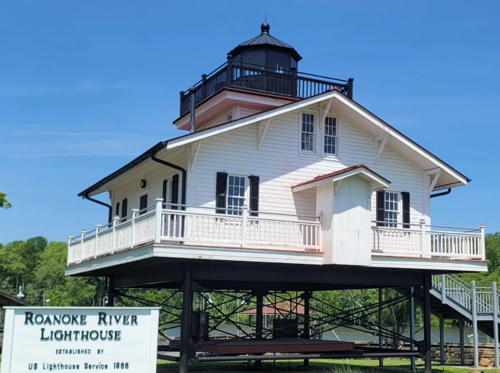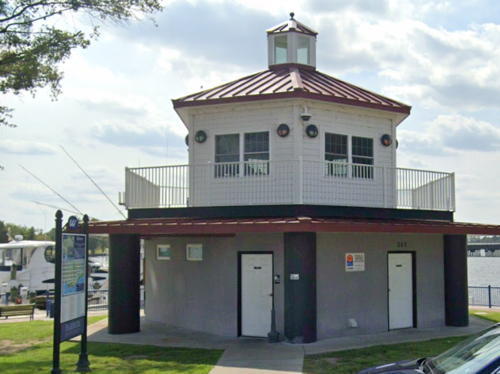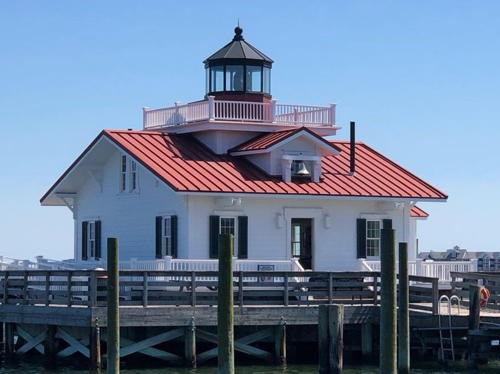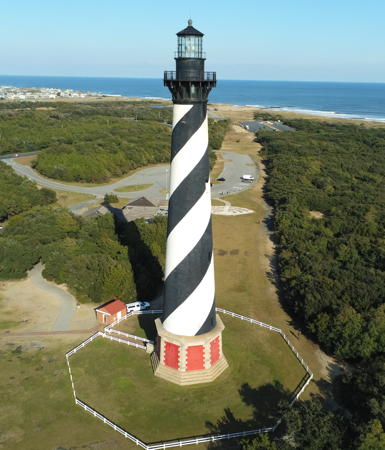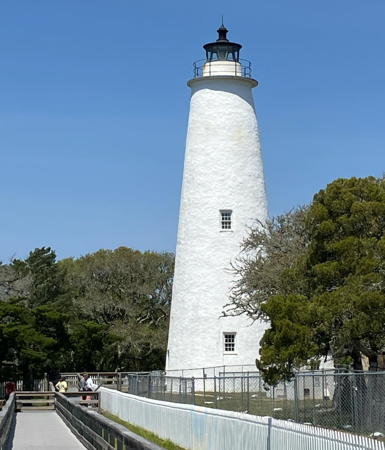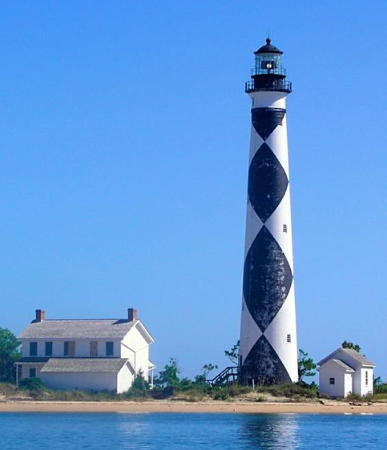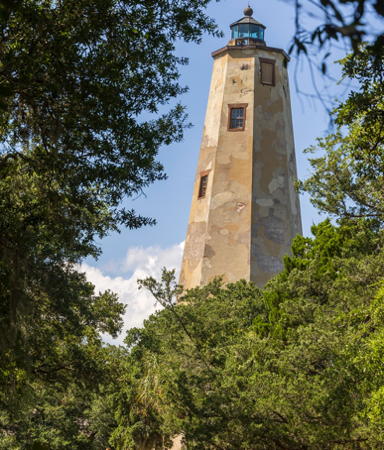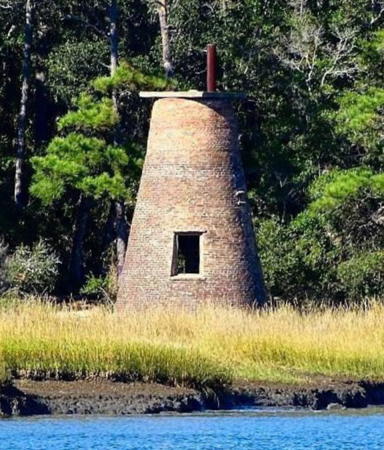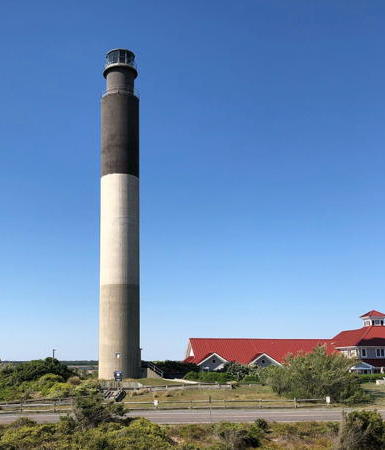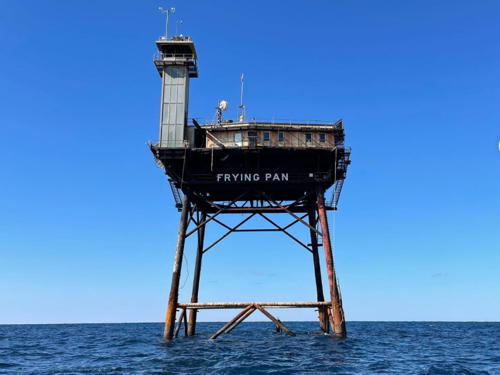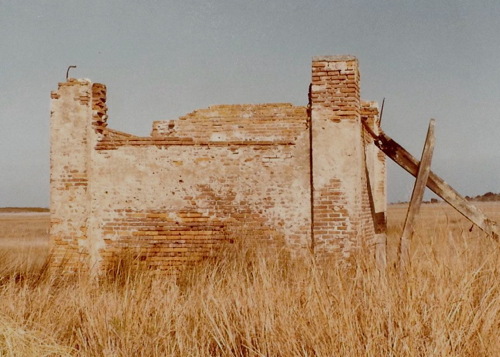The United States of America is a federal union of 50 states and a capital district. The state of North Carolina is located on the central east coast of the country. The coast of North Carolina is a chain of sandy barrier islands, called banks, enclosing shallow lagoons called sounds. From Cape Lookout northward the banks are widely separated from the mainland and are called the Outer Banks. The state's three great capes, Cape Hatteras, Cape Lookout, and Cape Fear, extend underwater as dangerous shoals, and the area around these capes earned its name as the Graveyard of the Atlantic. Several of America's tallest and best known lighthouses were built to warn ships away from this dangerous coast.
All but one of the cottage screwpile lighthouses of the North Carolina sounds have been lost but two replicas have been built: the town of Plymouth rebuilt the 1866 Roanoke River lighthouse and the town of Manteo rebuilt the 1857 Roanoke Marshes Light. The 1887 Roanoke River lighthouse, the only original screwpile lighthouse surviving, has been saved and restored at Edenton.
Preservation efforts in North Carolina got a huge boost in 1999 through the well-publicized relocation of the Cape Hatteras Light, and the Outer Banks Lighthouse Society has worked hard to raise interest in the work needed at the other lighthouses.
Navigational aids in the United States are operated by the U.S. Coast Guard, and North Carolina aids to navigation are the responsibility of the Coast Guard's Sector North Carolina based at Wilmington with Aids to Navigation Teams at Wanchese for the northern coast, Fort Macon for the central coast and Oak Island for the southern coast. Ownership (and sometimes operation) of historic lighthouses has been transferred to local authorities and preservation organizations in many cases. All the historic Outer Banks lighthouses are now in National Park Service or local ownership.
ARLHS numbers are from the ARLHS World List of Lights, Admiralty numbers for the coastal lights are from volume J of the Admiralty List of Lights & Fog Signals, and USCG numbers are from Vol. II of the U.S. Coast Guard Light List.
- General Sources
- Outer Banks Lighthouse Society
- OBLS is an advocate for all of North Carolina's lighthouses.
- North Carolina Lighthouses
- Great photos and historical accounts by Kraig Anderson.
- Online List of Lights - North Carolina
- Photos by various photographers posted by Alexander Trabas.
- Lighthouses of North Carolina
- Photos and accounts by Stephen Wilmoth, the "Beach Bum."
- Screwpile Lighthouses of Pamlico Sound
- Historical information posted by the Neuse River Sailors Assocation.
- Lighthouses in North Carolina
- Photos by various photographers available from Wikimedia.
- North Carolina, United States Lighthouses
- Aerial photos posted by Marinas.com.
- Leuchttürme USA auf historischen Postkarten
- Historic postcard images posted by Klaus Huelse.
- U.S. Coast Guard Navigation Center: Light Lists
- The USCG Light List can be downloaded in pdf format.
- NOAA Nautical Charts
- Nautical charts for the coast can be viewed online.

Bodie Island Light, Nags Head, August 2024
Instagram photo by Surfing with Brooke

